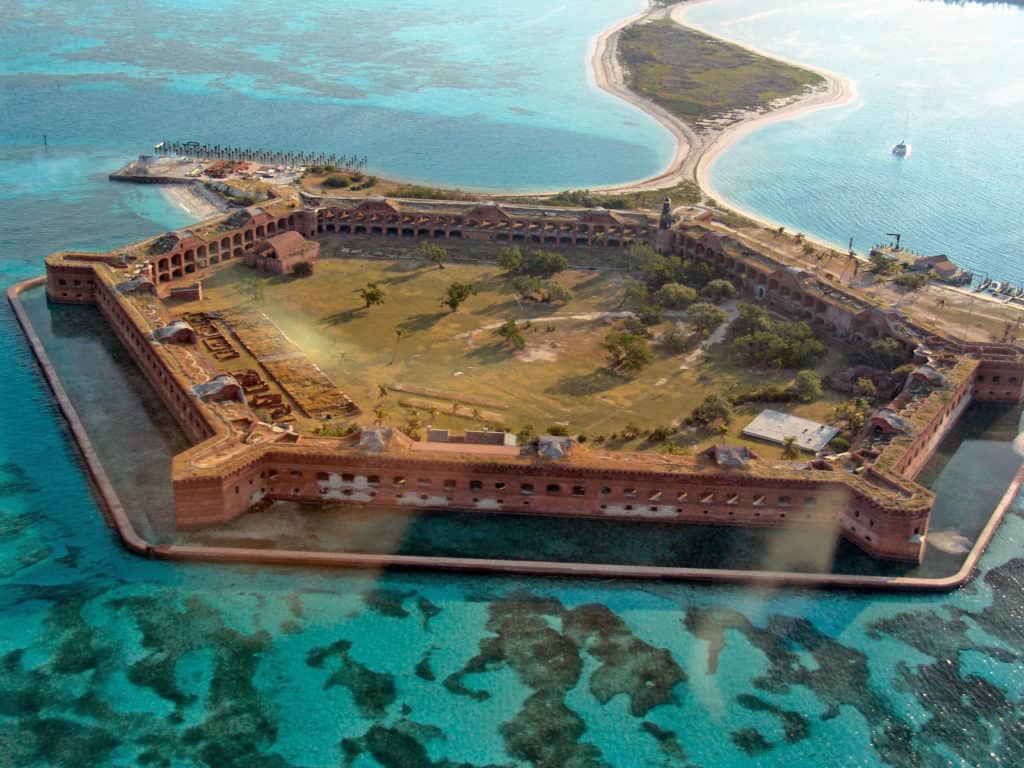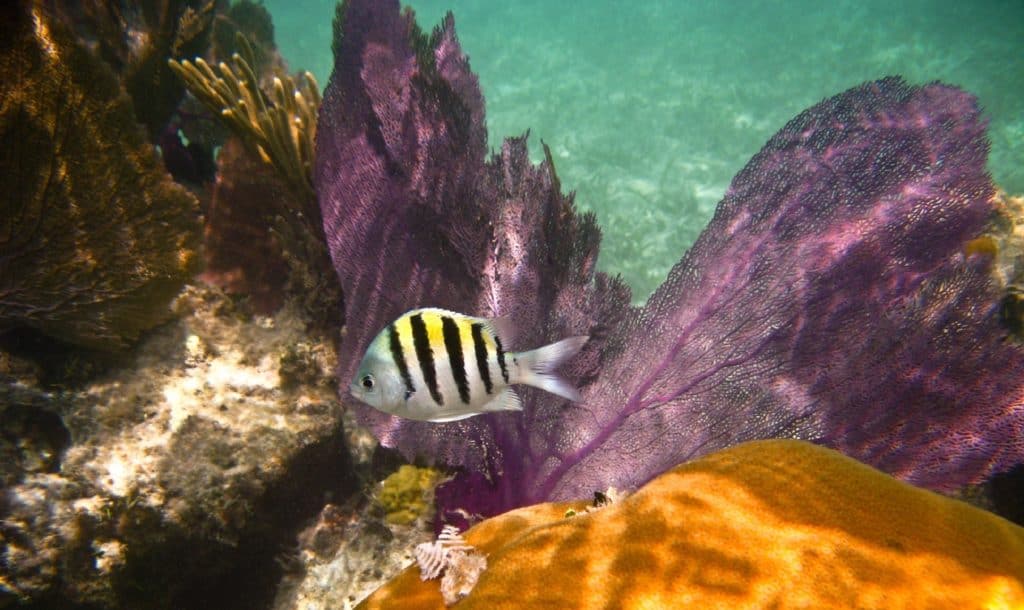The Best Watery Wonder in Florida (and Maybe Even the World): Dry Tortugas National Park

There are 63 parks in the U.S. National Park system. While all feature extraordinary natural landscapes and provide a rejuvenating break from the hustle and bustle of daily routines, some are truly remote. Florida’s Dry Tortugas National Park is just such a place—coming here is the very definition of ‘getting away from it all.’ The park, which encompasses open water and a series of seven small islands located 70 miles from Key West, can only be reached by boat or seaplane, and when you arrive at its shores, you’ll feel like you’re at the ends of the earth. And you will be—ogling the beautiful, shimmering waters off the southernmost tip of Florida in a totally secluded setting.
Spanish explorer Ponce de Leon, who discovered the islands in 1513, gave them the ‘Tortugas’ part of their name (‘La Isla de Tortugas,’ based on all the turtles his crew of conquistadors discovered there. The ‘Dry’ part was added to the name by later mariners who found no fresh drinking water other than puddled rainwater.
Fort Jefferson
Once you get to the Dry Tortugas, it’s easy to understand its strategic value for protecting U.S. interests in the local waters, and why the federal government built 11-acre Fort Jefferson on Garden Key, the second largest island in the park (construction of the 3-level fort began in 1845 and continued over the next three decades but was never completed). Ships launched from the all-brick fort, which is surrounded by a moat, were meant to patrol the Gulf of Mexico and protect the Mississippi River trade in the Atlantic. But in 1874, the Army abandoned the fort and, over time, successive official designations granted the exquisite nature in the Dry Tortugas increasing levels of protection—the area became a national park in 1922.
Today, the huge, octagonal fortress and its iron light tower make for wildly interesting attractions that not only bring mid-19th-century history to vivid life but also Civil War history—the fort served as both a staging area for Navy ships sent to block Confederate ports and as a military prison for captured deserters. (At one point, the fort housed 2,000 people—military personnel and their families!)
Beyond the history: enjoying nature in the park
But the rewards of the Dry Tortugas for visitors go far beyond its historical remains. Its enchanting shores and surrounding waters are a haven for sea life, birds (birds migrating between South American and the U.S. stop here), bird watchers (about 300 bird species have been spotted here), swimmers, paddlers, snorkelers, skin divers—and seekers of natural beauty.
The waters are shallow (5-15 feet), which means that both beginning and experienced snorkelers can see an incredible array of tropical fish darting around the living coral, and they can access these snorkeling-ideal waters right off the white sand beaches that frame Fort Jefferson on Garden Key. There’s also a great designated swimming/snorkeling area on the northwest side of Loggerhead Key. (Just know, there’s no cellphone service, Wi-Fi or electricity in the Dry Tortugas, so you’ll have to wait to post your grams).
You can also picnic and even camp around the fort (Garden Key features campsites; bring whatever you need with you).
Getting to Dry Tortugas National Park

By Ferry: The Yankee Freedom III
The official ferry to the park is the Yankee Freedom III, a high-speed catamaran (reserve well in advance; 800-634-0939). Check-in at 7:00 am and board at 7:30 am at the ferry terminal located at 100 Grinnell St. in Key West (an adult ticket is $190; a child ticket is $135—the price includes the park entrance fee). You’ll arrive at Fort Jefferson at about 10:15 am and, along the way, you’ll see the beautiful Marquesa Islands and Boca Grande. The included 45-minute tour of Fort Jefferson starts at 11:00 am.; lunch goes from 11 am to 1:00 pm; and then you’ll have two hours to enjoy the beach and water because the departure isn’t until 3 PM.
In addition to the narrated tour of the fort, the crew provides breakfast and lunch and all the gear you need to snorkel (snorkel, fins, and mask) around the colorful reef (which stretches from the Dry Tortugas all the way to Miami in the Atlantic). Give our regards to the multicolored fish, sea turtles, sea fans, sea anemones, lobsters, sponges and staghorn coral clusters.
By Seaplane: Key West Seaplane Charters
Key West Seaplane Charters operates daily flights to the Dry Tortugas and Fort Jefferson from Key West (board the plane at 3471 South Roosevelt Blvd; morning and afternoon half-day trips cost $361 per adult; a full-day trip costs $634 per adult; 305-293-9300). There’s nothing like viewing the unspoiled beauty of Dry Tortugas National Park, Fort Jefferson, and the surrounding waters from the air. This is the only company offering air service to the park and flying in their de Havilland Turbine Otter seaplane is a thrilling experience in and of itself (not to mention the fastest way to get to the park). On this is a low-altitude, sightseeing, fully narrated flight (you’ll get a headset), you’ll learn a whole lot while gazing out at the spectacular turquoise waters, their residents (expect to see sharks, stingrays, turtles, and maybe porpoises) and even shipwrecks of Spanish galleons where enormous treasure has been recovered.
After circling around Fort Jefferson, the plane lands on the water and beaches so passengers can enjoy time on the island. The flight includes complimentary snorkeling gear.


